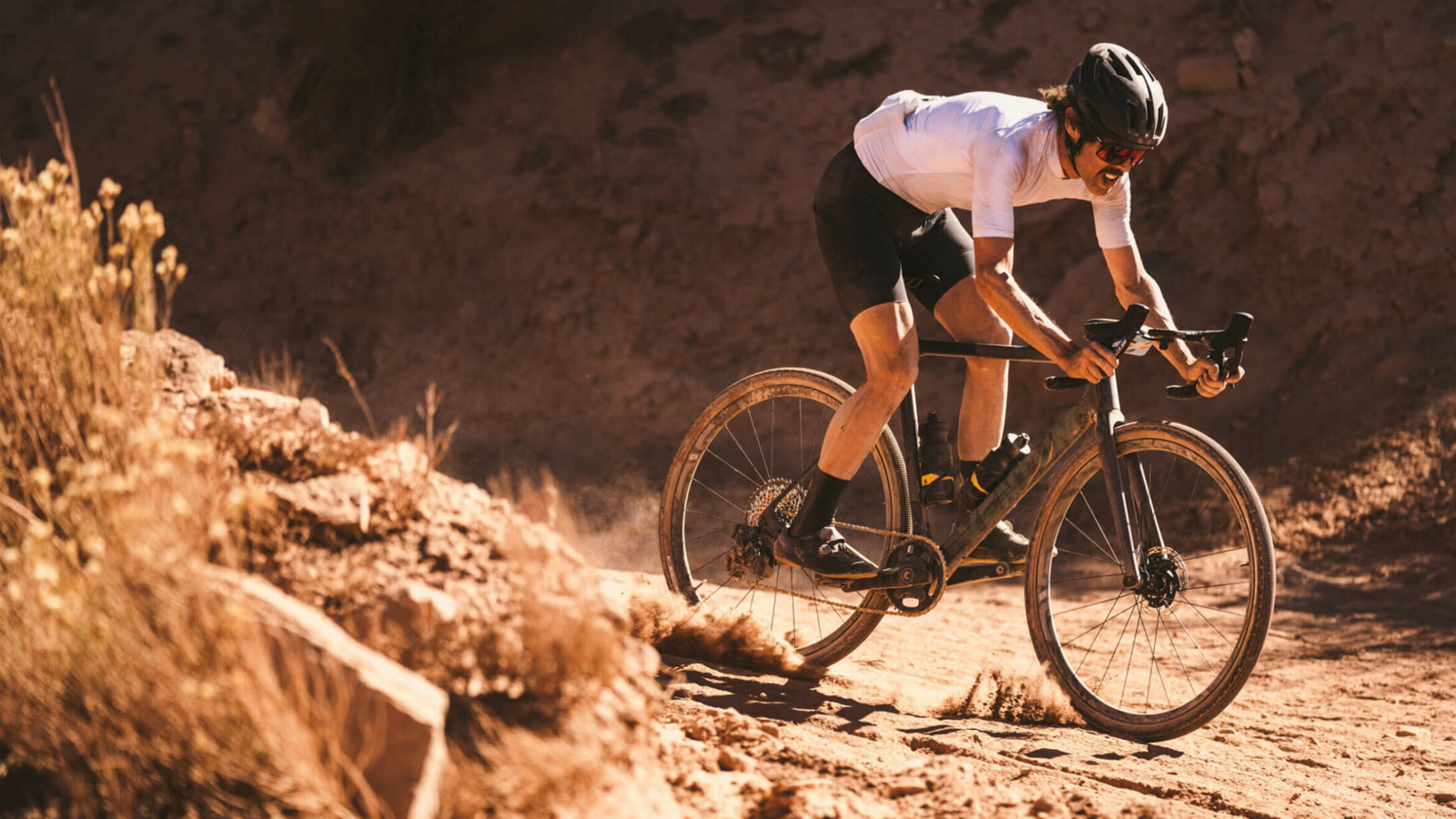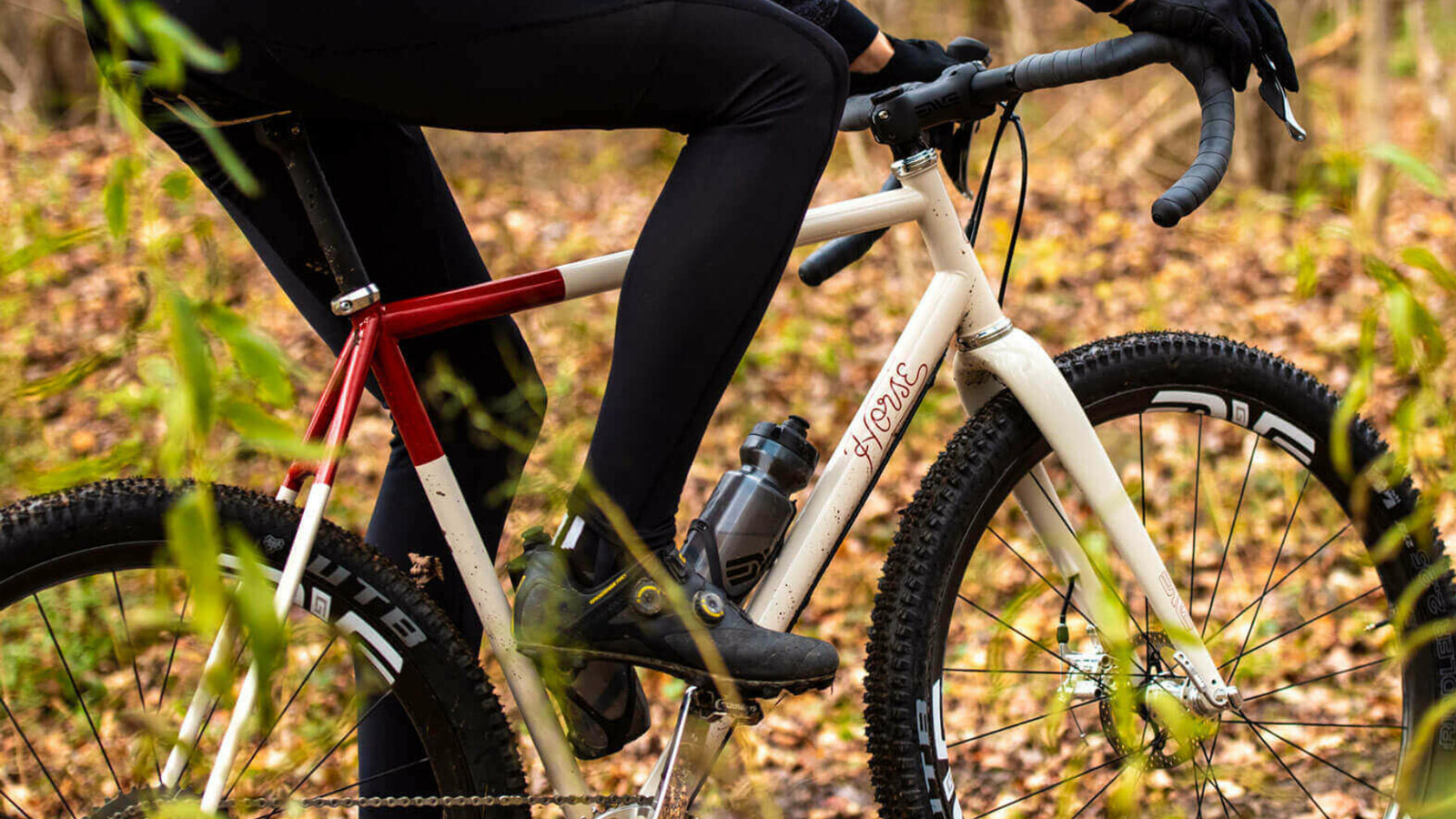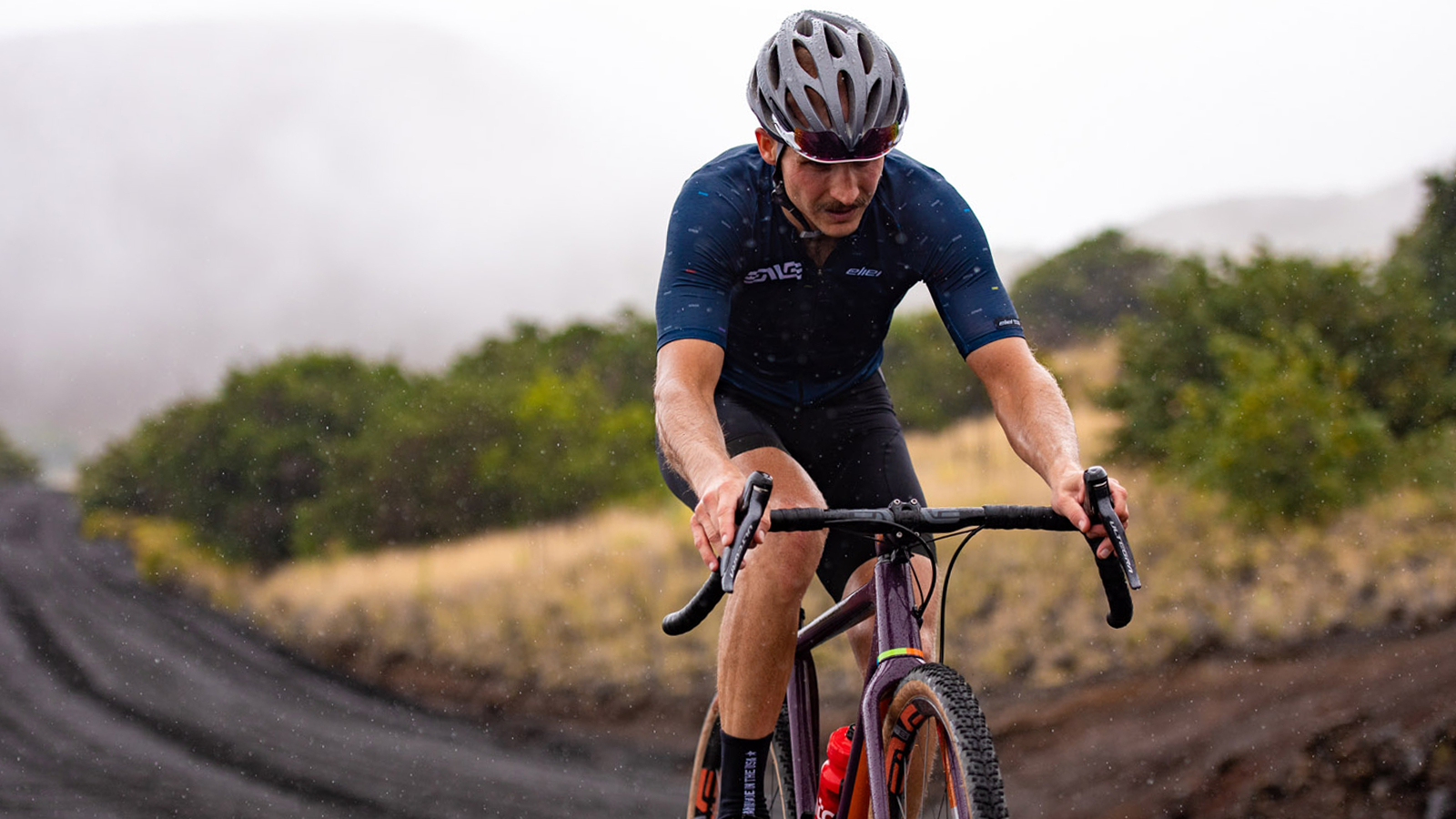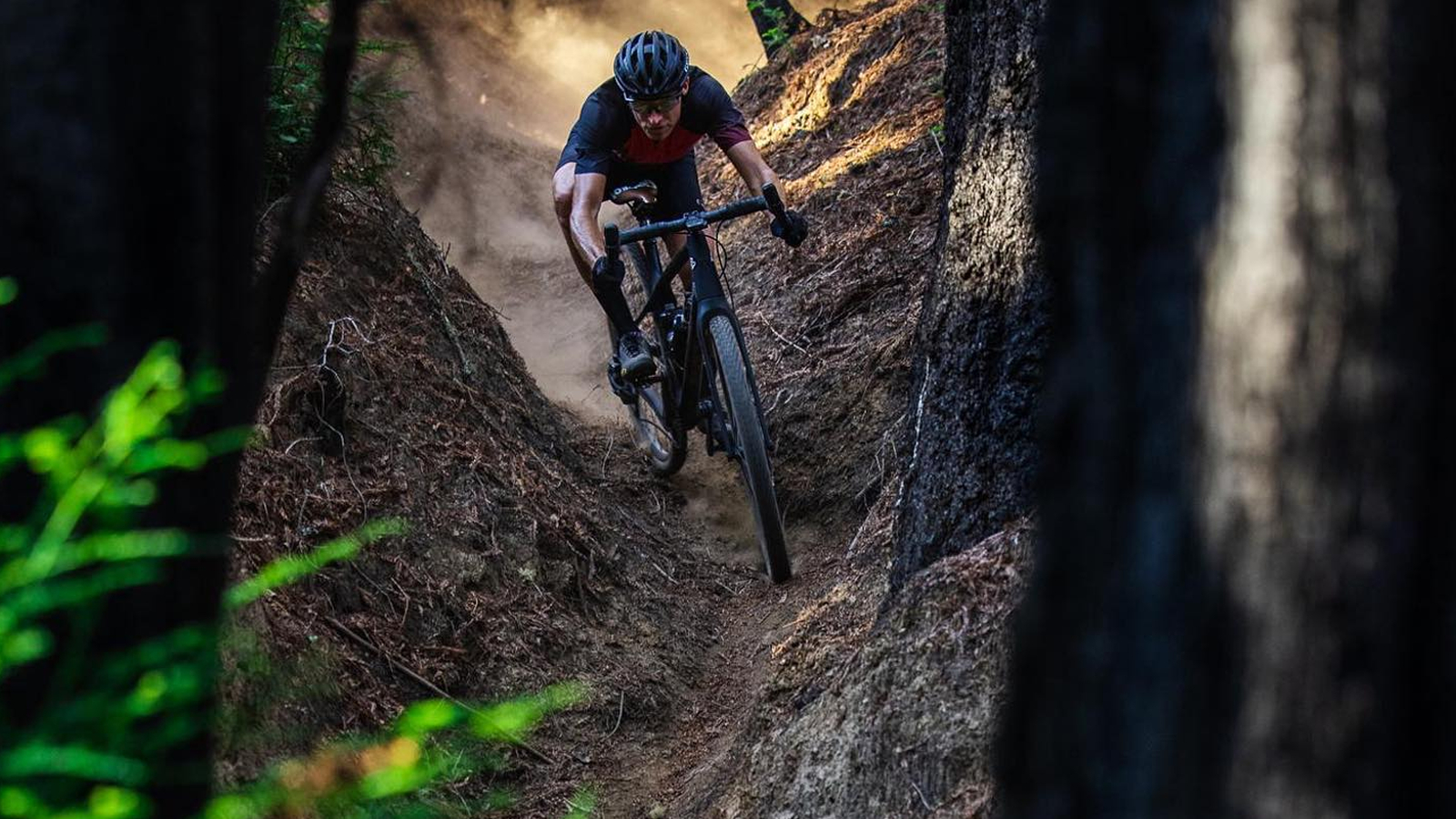Confused about gravel bike geometry? Here's everything you need to know
A deep dive into the geometry of gravel bikes and how they differ from road, cyclocross, and mountain bikes

Although gravel bikes look like road bikes with fat tires, much more is going on than meets the eye. As gravel riding has gained popularity there has been a lot of development in gravel bike geometry. Not only has gravel geometry adopted many ideas and concepts from mountain biking and applied them to drop-bar off-roading, but gravel bikes have also been evolving, splitting into specialized sub-disciplines each with its own specific geometry.
In this article, we'll look at the specific geometry of a gravel bike, and how it compares to mountain bikes and road bikes.
Designed for all things off-road
Why trust BikePerfect
Before we get into the math and measurements associated with gravel bike frames, we first need to consider what is a gravel bike and what they are designed for. Gravel bikes are designed for a broad range of off-road riding, from hardpack to gentle singletrack and rough rocky surfaces.
Built for everything from gravel racing to bikepacking, gravel bikes are designed to be more comfortable than road bikes, but faster and more efficient than mountain bikes.
Gravel biking has begun splintering into sub-disciplines, with gravel bikes becoming more specialized. When shopping for a new gravel bike it's worth considering what you want from a gravel bike as this will play an important role when it comes to deciding what gravel geometry will suit you best.
Race-orientated gravel bikes will usually feature lightweight aero frame designs and incorporate aggressive road-style geometry with low handlebars (aka stack), steeper head angles, and longer reach. You will also see modern all-road bikes sliding into this category too as all-road tire clearances increase to 40mm, though these bikes will tend to feature more traditional endurance road geometry. More capable adventure-based gravel bikes will have many mounting points for luggage, more tire clearance, and comfort considerations. They will also feature higher stack, shorter reach, and slacker head angles to improve control and stability over rougher terrain. These aren't set rules and there are plenty of fast race-style gravel bikes that also feature luggage options.
Now, let’s dive into the details.

Fits like a road bike
Looking at it from the side, a gravel bike looks similar to a road bike, apart from the wider tires. Both frames have similar overall shapes, drop bars, and disc brakes (on most road bikes).
In terms of specific sizing, most road bikes are listed in centimeter increments (e.g. 52cm, 54cm) whereas some gravel bikes are listed in a broader range of sizing (e.g. Small, Medium, and Large) – you can find conversions on most manufacturers’ websites.
When choosing the right fit consider standover height, reach, and stack as these will determine comfort on the bike. Remember that choosing the right frame size is only the starting point. Fine-tuning the fit by adjusting components such as saddle height, stem length, and handlebar width is equally important for achieving a comfortable and efficient riding experience.
If you're between sizes you will need to consider the bike's geometry to determine which size bikes stack, and reach numbers will best suit you. The choice between two different sizes is going to change the ride quality of the bike. Smaller frames will offer better agility and performance however lower front stack height (the height of the top of the head tube in relation to the bottom bracket) may require more compromises to get the right fit.
Ultimately, if you are unsure of what size of bike to get talk to the shop or test ride a few bikes if possible. While it will add extra cost, if you're uncertain about bike sizing or want personalized advice, consulting with a bike fitter can be invaluable. They can assess your body proportions, and riding goals to provide specific recommendations based on their expertise.

Gravel bike geometry breakdown
Deciding on the best gravel geometry is complicated as it not only needs to factor in how you ride your bike and your own personal preferences, but it's also a combination of different measurements that all affect how a bike rides. Here are the most important measurements to consider and what effect they have on how a gravel bike rides.
Wheelbase and head tube angle
One of the defining features of gravel bike geometry is a longer wheelbase and slacker head tube angle. The longer wheelbase helps ‘stretch out’ the frame, which improves handling and stability on rough terrain. This differs from road bikes which have much shorter wheelbases for quick handling in tight corners.
The head tube angle is the angle between the horizontal plane and a straight line running down the center of the steerer tube – making this angle “slacker” means lengthening the wheelbase and pushing the front wheel further in front of the bottom bracket. Thus a slacker head tube angle has similar effects on handling as lengthening the wheelbase – they both improve overall handling, especially on technical terrain and at slow speeds. A slacker head tube angle also reduces the chance of toe to tire overlap, which is an important factor for riders on smaller frames.
Reach
Reach measures the horizontal distance between the bottom bracket and the center of the top tube. Gravel bikes have a shorter effective reach than most road bikes which helps keep the rider’s center of gravity in the middle of the bike as opposed to stretched out over the front wheel. Road bikes are known for having long stems and longer reaches, which puts riders in a simultaneously powerful and aerodynamic position. While this is great for straight-line speed, it is less suited for bike handling on rough, steep tracks and limits a rider's ability to use their body weight to control the bike on off-road terrain.
It's important to note that while the effective reach is often shorter than road bikes, geometry charts won't always reflect this accurately due to the way reach is measured. Gravel bikes have begun trending towards longer top tubes with shorter stems as this maintains the same riding position whilst increasing the wheelbase.
Stack
Stack refers to the vertical distance between the bottom bracket and the top of the head tube. A low stack will put a rider in a more aggressive and aerodynamic position whereas a higher stack will be more upright and when used effectively can enhance control.
Stack is an important decision as it has a significant effect on comfort as the correct stack will be determined by a rider's flexibility and riding preferences.
Chainstay length
The length of the chainstay affects a bike's stability, maneuverability, and ability to accommodate wider tires. Shorter chainstays, typically found on race-oriented gravel bikes result in a more responsive and agile feel. However, they may limit tire clearance. Longer chainstays offer more stability and better climbing performance on very steep inclines, especially when riding over rough surfaces. Longer stays also provide additional clearance for wider tires.
Bottom bracket height
The bottom bracket drop refers to the vertical distance between the bottom bracket and the wheel axles. A higher bottom bracket provides increased ground clearance, reducing the chances of pedal strikes when riding over obstacles. Conversely, a lower bottom bracket enhances stability and improves the bike's cornering capabilities by lowering the rider's center of gravity although if you go too low there is a risk of pedal strikes.
Other fit considerations
Handlebar width and flare
Road bikes have narrow handlebars for aerodynamics and comfort whereas MTBs favor wide bars for maximum control. Naturally, gravel bikes find themselves in the middle, finding a balance of control and comfort although widths are much closer to the ones used on road bikes.
To add a little extra control, the best gravel handlebars feature flared drops which allow the handlebar to maintain a narrow top position but improve control when descending in the drops.
Crank length
Like any other bike, crank length is an important, yet often overlooked, metric in bike geometry. The correct crank length is dependent on a rider's height, flexibility, and pedaling preference, however, it's unfortunately common for bikes to have the wrong length cranks fitted, particularly on small bike sizes. Most small bikes will come fitted with cranks that are too long. Due to the expense of replacing a crankset, we wouldn't necessarily recommend upgrading the cranks without seeking professional fitting advice first.
Gravel bike geometry vs. mountain bikes and road bikes
Gravel bike geometry lies somewhere between road bikes and mountain bikes, combining elements of both to offer a versatile and comfortable riding experience. Gravel bike geometry is a broad spectrum however some key design considerations clearly differentiate gravel geometry from MTB and road.
Compared to road bikes, gravel bikes typically have a more relaxed frame geometry, specifically head angle and wheelbase, for increased comfort and stability on rough surfaces. Gravel bikes will also offer wider tire clearance to accommodate larger, knobby tires for off-road traction.
Visually, there are many differences between a mountain bike and a gravel bike but the most notable are the steeper head tube angles for more responsive handling on mixed surfaces and lower stacks for a more aerodynamic riding position. Gravel bikes also have smaller tire clearance as gravel bikes prioritize rolling speed more.

Graham Cottingham joined the BikePerfect team as our senior tech writer in 2020. With over 20 years of riding experience, he has dabbled in downhill, enduro, and gravel racing. Not afraid of a challenge, Graham has embraced bikepacking over the last few years and likes nothing more than strapping some bags to his bike and covering big miles to explore Scotland's wildernesses. When he isn’t shredding the gnar in the Tweed Valley, sleeping in bushes, or tinkering with bikes, he is writing tech reviews for BikePerfect.
Rides: Cotic SolarisMax, Stooge MK4, 24 Bicycles Le Toy 3, Surly Steamroller
Height: 177cm
Weight: 71kg
- Zach NehrContributor



